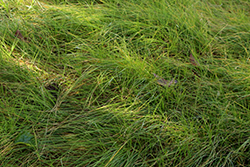It's all about ...
plants

Height: 8 inches
Spread: 24 inches
Sunlight:
![]()
![]()
![]()
Hardiness Zone: 8a
Other Names: California Field Sedge, Expressway Sedge
Description:
This short sedge presents rich green foliage, and typically grows in dense, rounded clumps, spreading over time; cultivated as a lawn substitute, or for naturalizing; thrives in full sun to part shade, but goes summer dormant in warmer, drier climates
Ornamental Features
Clustered Field Sedge's attractive small grassy leaves emerge light green in spring, turning bluish-green in colour throughout the season on a plant with a spreading habit of growth. The brown seed heads are carried on plumes in early summer.
Landscape Attributes
Clustered Field Sedge is an herbaceous perennial grass with a ground-hugging habit of growth. It brings an extremely fine and delicate texture to the garden composition and should be used to full effect.
This is a relatively low maintenance plant, and is best cleaned up in early spring before it resumes active growth for the season. It has no significant negative characteristics.
Clustered Field Sedge is recommended for the following landscape applications;
- Mass Planting
- General Garden Use
- Groundcover
- Naturalizing And Woodland Gardens
Planting & Growing
Clustered Field Sedge will grow to be about 8 inches tall at maturity, with a spread of 24 inches. Its foliage tends to remain low and dense right to the ground. It grows at a medium rate, and under ideal conditions can be expected to live for approximately 10 years. As an herbaceous perennial, this plant will usually die back to the crown each winter, and will regrow from the base each spring. Be careful not to disturb the crown in late winter when it may not be readily seen! As this plant tends to go dormant in summer, it is best interplanted with late-season bloomers to hide the dying foliage.
This plant performs well in both full sun and full shade. It prefers to grow in average to moist conditions, and shouldn't be allowed to dry out. It is not particular as to soil type or pH, and is able to handle environmental salt. It is somewhat tolerant of urban pollution. This species is native to parts of North America. It can be propagated by division.
This plant is not reliably hardy in our region, and certain restrictions may apply; contact the store for more information.
